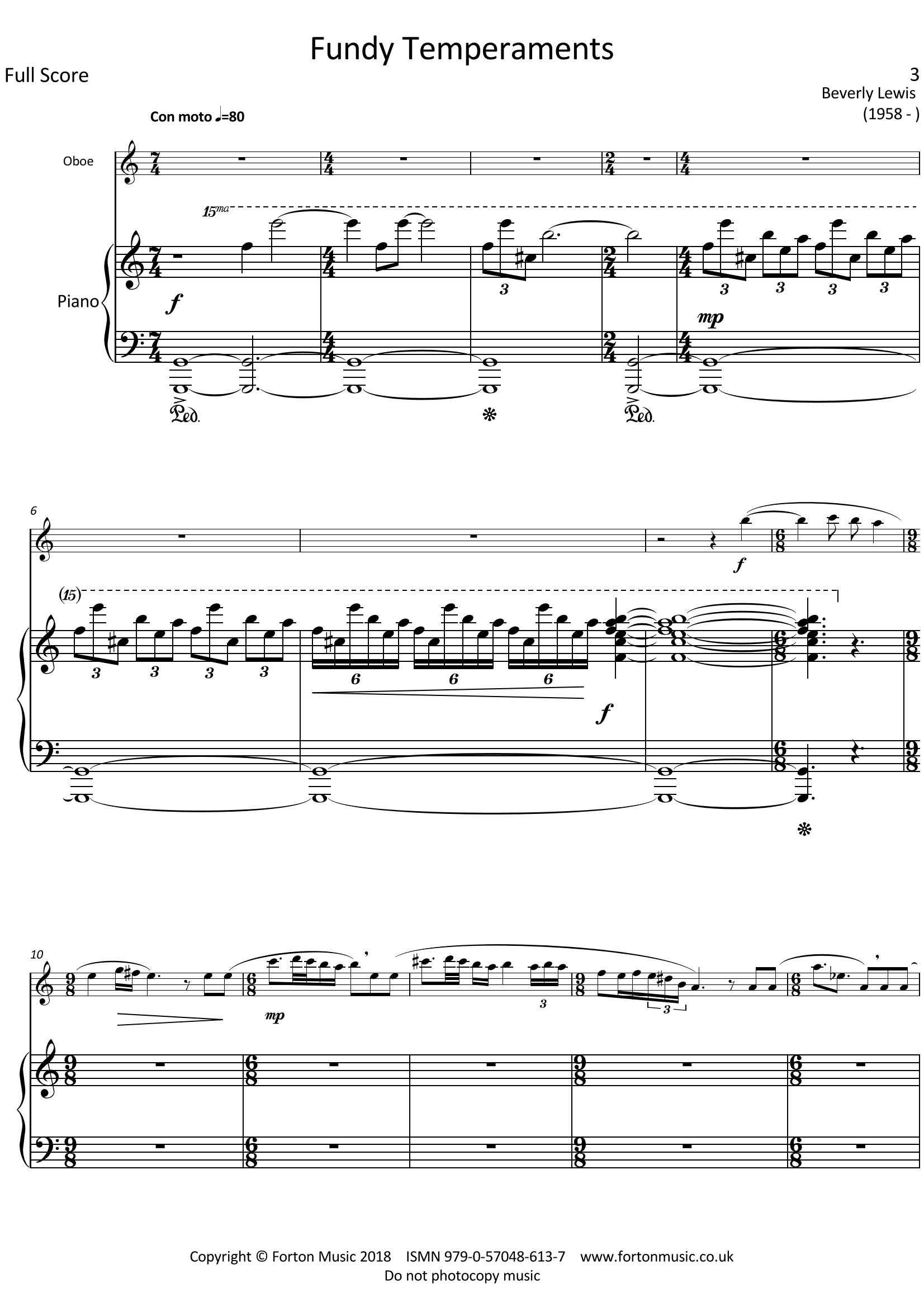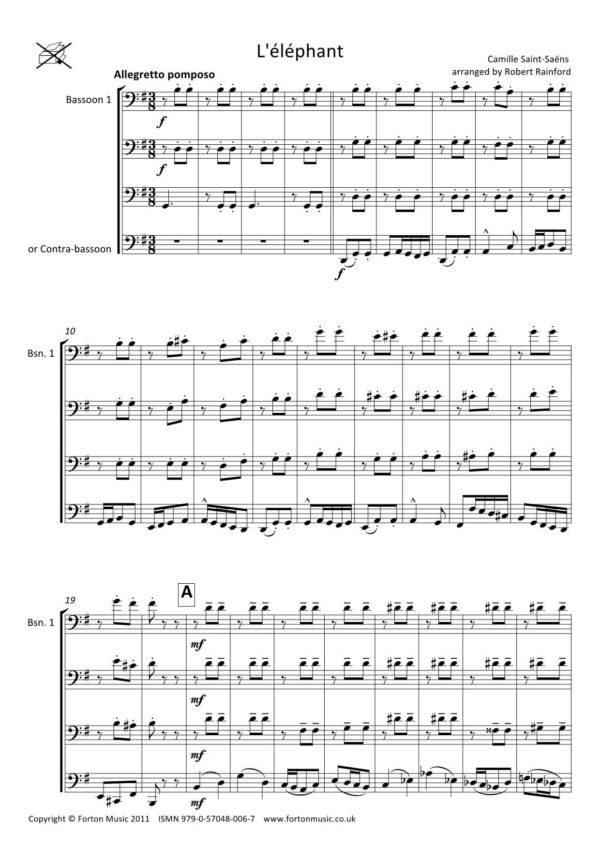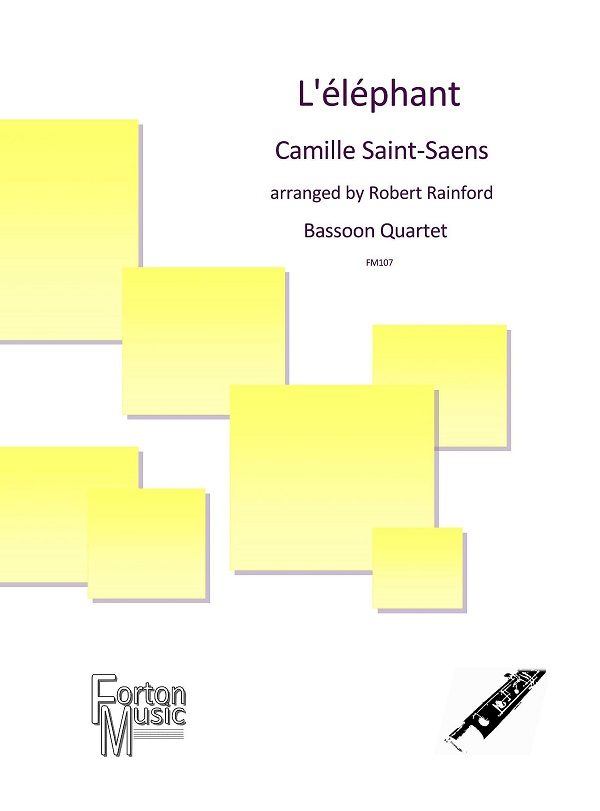Description
Fundy Temperaments is a programmatic piece which describes the Bay of Fundy, which is a part of the Atlantic Ocean near where I grew up. The Bay of Fundy is no insignificant body of water. The highest tides on earth may be found here, with waves reaching 16 metres (52 feet) at the head of the Bay (equaled only by those of Ungava Bay). Mi’kmaq folklore suggests that the high tides first began when a giant whale, angering the god Glooscap, created such a gigantic splash with his tail, that to this day, the water sploshes back and forth. During the 12.4 hour tidal period, 115 billion tonnes of water flow in and out of the Bay. On occasion (during storm surges, caused by winter winds), the tides have exceeded 20 metres in height. The Bay of Fundy is considered to be unusually susceptible to storm surges and has had a number of them. Perhaps the best-known was the Saxby Tide of 1869 which was accompanied by the Saxby Gale, named after Lieutenant S. M. Saxby of the British Royal Navy. Lt. Saxby had issued a news release in the late fall of 1868, predicting that a storm of “unusual magnitude would visit the earth” at 7:00 am October 5, 1869 (approximately eleven months later). This massive storm caused major flooding along the Bay of Fundy. Dykes which had protected the reclaimed salt marshes were damaged and, in some cases, destroyed. The Saint John River rose some three feet as far up as Fredericton. Damage was caused to wharves, buildings, boats and ships. There were many deaths associated with this storm surge,from a number of ships sinking at sea as well as from people drowning in the coastal floods. Over the years, in fact, hundreds of lives have been recorded as lost in the Bay of Fundy. Indeed, the Bay of Fundy has demonstrated its destructive force many times over, but it has also bestowed upon us many wonderful gifts: the beauty of gently rippling waves juxtaposed against a crimson sunset; the delectable, healing riches of fish and seafood; the mystery of an enveloping blanket of grey fog; the natural source of tidal power which can be put to positive use by converting the energy of the tides into electricity or other useful forms of power, to name but a few. In Fundy Temperaments, the unpredictability of the sea is captured by very sudden mood swings. The piece begins with an ominous sense of apprehension (created through the use of dissonant chords in the right hand of the piano part along with dark, low octaves in the left). This is very quickly replaced by a light, dancing mood. There are whimsical foghorn sounds in the oboe part: picture a group of tipsy sailors and their lusty rendition of a sea shanty. Next there are a few crashing waves and the party breaks up. The tension builds once more and, after an intense climax, represented in the oboe’s playing of ‘beating multiphonics’ (harsh, deafeningly-loud sounds), the English hymn ‘For those in Peril on the Sea’ is incorporated. A new calm takes over, followed by another brief party. Unfortunately the ship ends up sinking (in an extended section of descending sequences), albeit with a degree of elegance. The entire event is summarized once more in a virtuosic cadenza played by the oboe, in which I have employed fast passage work in a style similar to the oboe music of the nineteenth-century Italian composer and oboist Antonio Pasculli. Near the end of the cadenza, the piano joins the oboe for a doleful ‘in paradiso’ section. Immediately following the cadenza, there is a short conciliatory ending: the winds have finally died down and the sea is calm. Fundy Temperaments had its world première by Michele Fiala (English horn) and Donald Speers (piano) at the International Double Reed Society Conference in Birmingham, UK on July 22, 2009. This transcription for oboe and piano was created in 2011.








Reviews
There are no reviews yet.